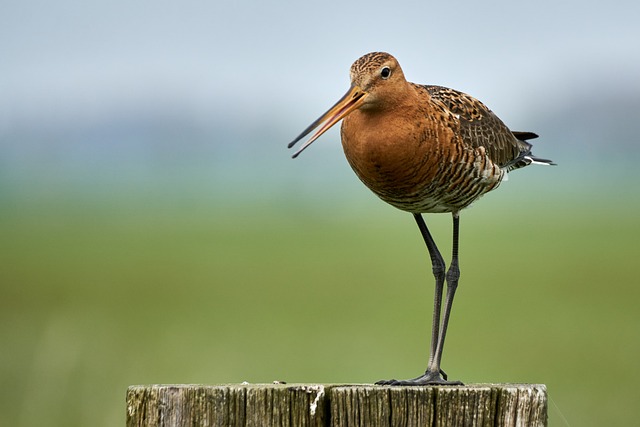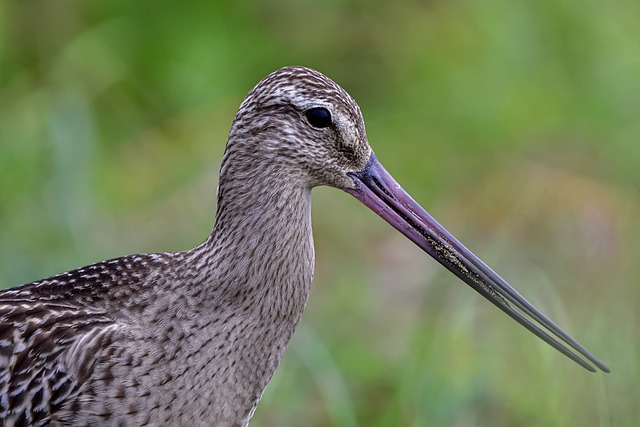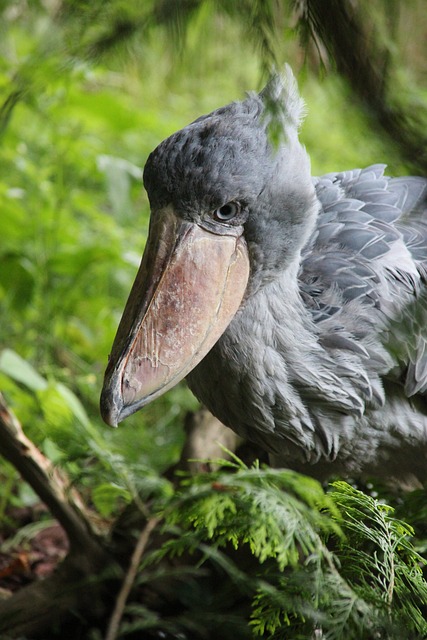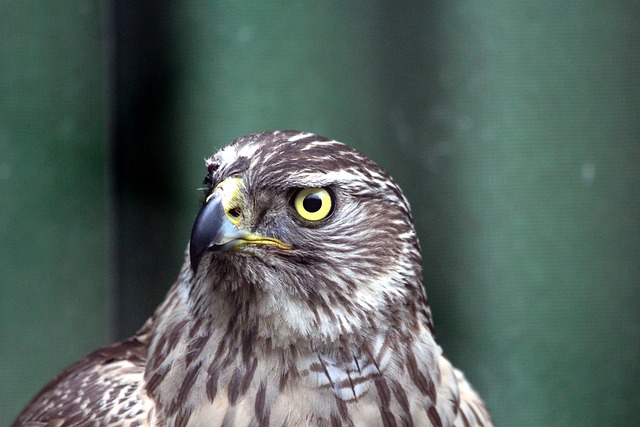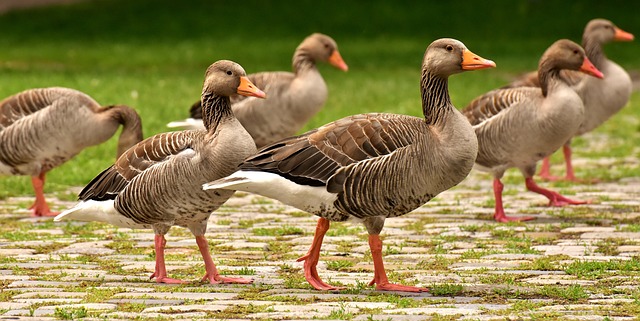The pied avocet is a species of wader that is widely spread across many parts of the world. This bird is commonly seen as an icon of the wetlands with its long, delicate legs and delicate beak.
The pied avocet is a unique species with an impressive set of characteristics that set it apart from other waders.
In this article, we will explore the pied avocet in-depth, focusing on its appearance, habitat, diet, breeding, migration, and conservation.
Introduction
The pied avocet (Recurvirostra avosetta) is a migratory bird belonging to the avocet family of Recurvirostridae. It is best known for its distinctive black and white plumage and long, upcurved bill. The bill is used in an unusual way, sweeping back and forth in the water to collect food items. The male pied avocet is slightly larger than the female and has more conspicuous black and white markings.
The pied avocet is widely distributed across much of Europe, Asia and Africa. It is most commonly found in shallow brackish waters, such as estuaries, wetlands, and inland lakes. The bird is also found in coastal areas, particularly around the edges of salt marshes. Its ability to exploit a wide range of easily accessible habitats is one of the key factors in its successful global distribution.
The diet of the pied avocet consists mainly of crustaceans, mollusks and aquatic insects. The bird uses its long, upcurved bill to sweep the surface of the water and pick out food items. It also forages for food in shallow waters, probing the mud with its bill and picking out food items. The pied avocet has also been known to eat plant matter, including seeds and aquatic plants.
The breeding habits of the pied avocet are quite unique. The breeding season usually takes place in the spring, between March and May. During this time, the males become more actively involved in courtship activities, often performing elaborate displays in an attempt to attract a mate. The pair will then build a nest together, typically a shallow scrape lined with vegetation and feathers. The female will lay up to four eggs, which she will incubate for around 24 days.
The pied avocet is a migratory bird, often undertaking long journeys in search of food and suitable breeding grounds. The bird is known to migrate from its northern breeding grounds to its wintering grounds in Central and Southern Europe, North Africa, and the Middle East. These migrations usually take place between August and October, and the length of migration can vary greatly depending on the bird’s starting point.
The pied avocet is under threat from human activities, including habitat destruction, pollution and hunting. Conservation efforts have been undertaken to protect the species, including the creation of protected areas and the implementation of hunting restrictions. Despite these efforts, the population of pied avocets has declined in recent years, and its future remains uncertain.
In this article, we will explore the pied avocet in-depth, covering its appearance, habitat, diet, breeding, migration and conservation. By the end of this article, you will have a comprehensive understanding of this unique species and its place in the world.
Habitat
The pied avocet is a species of wading bird found in wetlands in many parts of the world. It prefers shallow, salty or brackish water and can be seen in lakes, lagoons, estuaries, flooded fields, salt marshes, and tidal flats.
The pied avocet is usually found in areas with flat terrain and open water, but can also be found in low-lying wetlands and even in shallow, fast-flowing streams. The species is highly adaptable and is able to nest in shallow water and even mudflats.
The pied avocet prefers warm climates and is generally found in temperate and sub-tropical regions. It often migrates to more temperate areas during the winter months, but usually returns to its original habitat when the warmer weather returns.
The species is also highly nomadic, and can move around within its habitat in response to changing water levels and food availability. It has been known to move from one wetland to another in search of food or the right conditions.
The avocet prefers shallow water, usually no more than a few centimetres deep. This makes it easy for them to move around and forage for food, as well as to build their nests. The species is also found on mudflats, which provide it with an easy source of food.
The avocet is particularly sensitive to disturbance and tends to avoid areas where there is a lot of human activity.
Diet
The diet of the pied avocet is quite varied and includes small invertebrates, crustaceans, mollusks, insects, fish, and even plants. They have been known to eat things from the upper shoreline such as crabs, worms, and mollusks. They also hunt for their prey in the water, using their long beaks as a tool to capture their food.
When hunting, the pied avocet will often submerge its head underwater in search of prey. This technique allows them to have an advantage over their prey, as they can detect the movement and vibrations of their prey before they can see them.
The pied avocet will also use mudflats to forage for food. Here, they probe into the mud with their beaks in order to search for worms, crustaceans, and mollusks. They can also use their long beaks to dig into the mud for food.
In addition to this, the pied avocet also eats plant material. This includes seeds, berries, and other vegetation. They are also known to eat the eggs of other water birds.
The pied avocet is also known to eat fish. They will often hunt for fish in shallow bodies of water, using their long beaks to catch them. They may also use the mudflats to hunt for fish, as the fish are often attracted to the mudflats.
Overall, the pied avocet is an opportunistic feeder. They will take advantage of whatever food sources are available and they will adjust their diet accordingly. This adaptability is one of the reasons why the pied avocet is able to thrive in such diverse habitats.
Breeding
The pied avocet breeds during the spring and summer months, making it a seasonal breeder. During these months they will form large colonies, typically in shallow freshwater marshes, with close access to a beach. These colonies play a major role in their mating rituals.
Males will engage in courtship rituals to attract a mate, such as strutting around with their wings spread, or gently pecking at the female’s head or neck. Once a pair has bonded, they will build a nest near the shoreline which is usually constructed out of reeds and grass. The nest is lined with downy feathers to provide a comfortable nesting area for the eggs.
The female generally lays 4 eggs, which both parents take turns incubating for about 20-25 days. Once the eggs hatch, the young avocets are covered in gray down and remain in the nest for several days. During this time, the parents will feed them and protect them from predators.
At around 3 weeks of age, the chicks will start to become independent and fledge. Although the chicks fledge at 3 weeks, they are not completely independent until they are around 4-5 weeks old. At this point, they will leave the nest and start foraging on their own.
The pied avocet is a monogamous species, meaning that they will only mate with one partner for the duration of the breeding season. However, if a partner is lost, they will find another mate to replace them.
Once breeding is over, the avocets will begin to migrate to their wintering grounds. This typically starts in the late summer and continues on until the winter months. The pied avocet’s wintering grounds are usually located in the south of Europe, Africa, and Asia.
Migration
One of the most fascinating behaviors of the pied avocet is its migratory pattern. These birds migrate between their breeding and wintering grounds, covering distances of thousands of miles in the process.
Migration routes for the pied avocet vary widely. In Europe, they migrate south to Africa in the winter and return in the spring. In North America, they migrate along the west coast from as far north as Alaska to as far south as Mexico.
Reasons for migration are largely determined by the availability of food sources. During the winter months, food sources become scarce in the northern regions and the birds must travel south to find adequate sources of food.
The length of migration also varies. For some birds, the journey from northern Europe to Africa is only a few thousand kilometers, while others have to travel up to 10,000 km. The length of migration also depends on the habitat. The pied avocet prefers to travel over open water, so migration routes often involve crossing large bodies of water.
Migration also requires other adaptations. The pied avocet has a wide wingspan that helps them fly long distances with ease. They also have a unique ability to adjust their speed to conserve energy. This allows them to cover large distances with minimal effort.
Migration is also a risky endeavor. The birds are often exposed to predators during their long journeys, and some succumb to exhaustion or starvation during the process.
Overall, the pied avocet is an impressive migrant and has developed a variety of adaptations to help it traverse long distances in search of food. Migration is a crucial part of its life cycle and plays an important role in its survival.
Conservation
The pied avocet is currently listed as Least Concern on the IUCN Red List for birds and is not currently recognized as threatened or endangered. However, the species is vulnerable to a number of threats. These include the destruction of suitable habitat due to agriculture, land reclamation, and overgrazing, as well as hunting and accidental capture in fishing nets. Additionally, the pied avocet may be vulnerable to pollutants from agricultural runoff and water extraction projects.
To protect the pied avocet and its habitat, some countries have established protected areas for the species. The European Union has also designated a number of Special Protection Areas (SPAs) for the conservation of the species. In these areas, activities such as hunting, fishing, and land reclamation are strictly prohibited. Additionally, the EU has also added the pied avocet to its Birds Directive, which provides legal protection for the species and its habitat.
Despite these efforts, the population of the pied avocet is still affected by a number of factors. These include pollution, urban development, and climate change. As a result, the population of the pied avocet is thought to be declining in some areas and is a cause for concern.
Despite the threats the species faces, its population is still relatively stable. The pied avocet is an interesting and important species and, with the right conservation efforts, its future looks bright.
Conclusion
The pied avocet is an amazing species that is both beautiful and remarkable in its abilities. From its distinct appearance to its impressive hunting techniques, this bird is truly one-of-a-kind. It is a species that has a strong presence in the biological world, and is a species that is vitally important to its environment.
The pied avocet is a species that is easily spotted in its preferred wetland habitats, where it can be found foraging, breeding, and nesting. Its diet consists of insects, crustaceans, and aquatic invertebrates, which it seeks out with its specialized hunting techniques. It migrates over long distances in order to reach their favored climates during the winter months.
The conservation of this species is imperative, as its population is declining due to a variety of factors. These factors range from habitat destruction to hunting and illegal capture. Conservation efforts are currently being made to protect the species from further decline and to ensure its future survival.
To conclude, the pied avocet is an incredible creature that plays a vital role in its environment. It is a species that deserves our respect and admiration, and one that we must work hard to ensure its continued existence. With continued conservation efforts, this species can be successfully protected, and its future outlook can be bright.
Video


